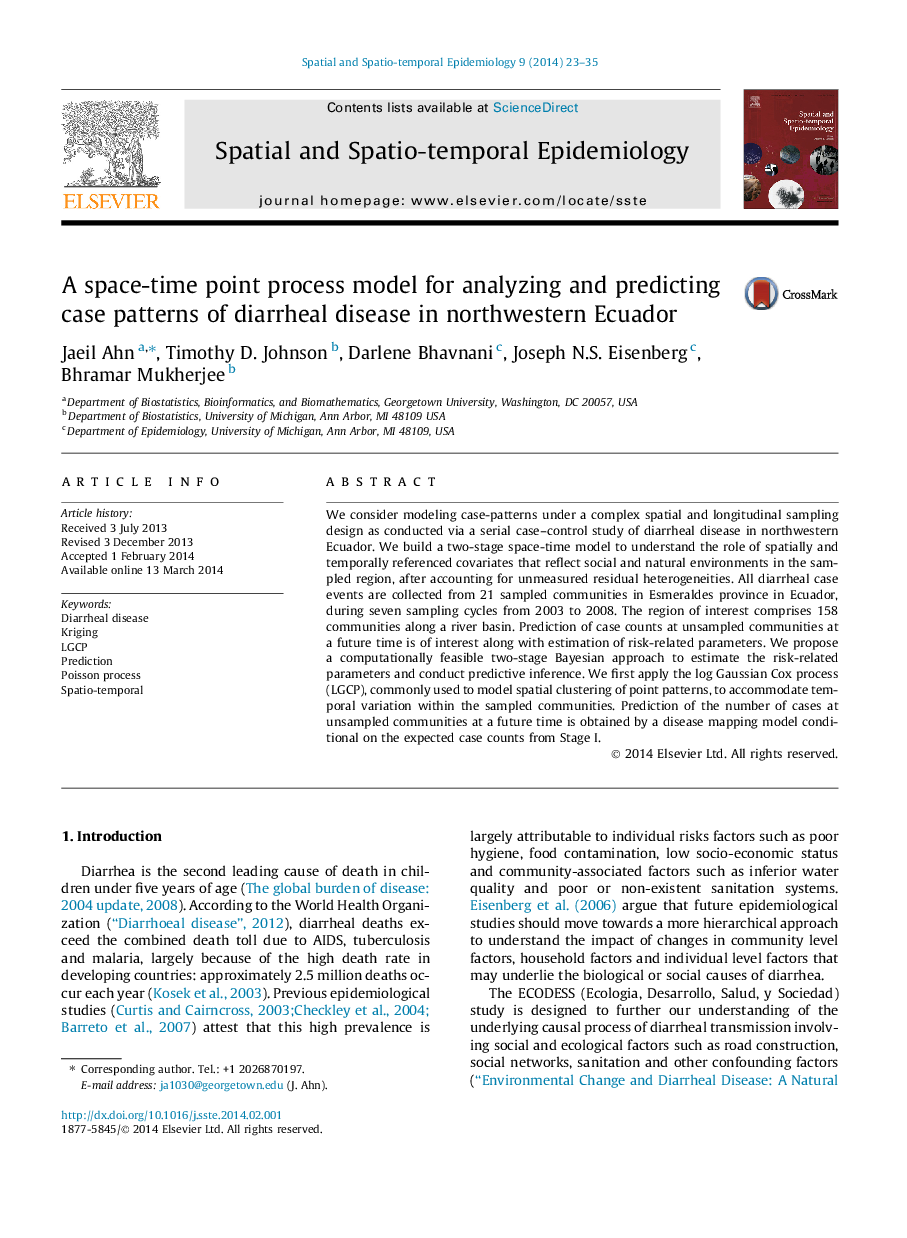| Article ID | Journal | Published Year | Pages | File Type |
|---|---|---|---|---|
| 1064331 | Spatial and Spatio-temporal Epidemiology | 2014 | 13 Pages |
•We model case-patterns under a serial case–control study of diarrheal disease.•Two-stage space-time model attempts to understand the role of spatially and temporally referenced covariates.•Prediction of the number of cases at unsampled communities at a future time.•The log Gaussian Cox process (LGCP) is used to model spatial clustering of point patterns.•More remote communities have fewer diarrheal cases after adjusting for population differences.
We consider modeling case-patterns under a complex spatial and longitudinal sampling design as conducted via a serial case–control study of diarrheal disease in northwestern Ecuador. We build a two-stage space-time model to understand the role of spatially and temporally referenced covariates that reflect social and natural environments in the sampled region, after accounting for unmeasured residual heterogeneities. All diarrheal case events are collected from 21 sampled communities in Esmeraldes province in Ecuador, during seven sampling cycles from 2003 to 2008. The region of interest comprises 158 communities along a river basin. Prediction of case counts at unsampled communities at a future time is of interest along with estimation of risk-related parameters. We propose a computationally feasible two-stage Bayesian approach to estimate the risk-related parameters and conduct predictive inference. We first apply the log Gaussian Cox process (LGCP), commonly used to model spatial clustering of point patterns, to accommodate temporal variation within the sampled communities. Prediction of the number of cases at unsampled communities at a future time is obtained by a disease mapping model conditional on the expected case counts from Stage I.
